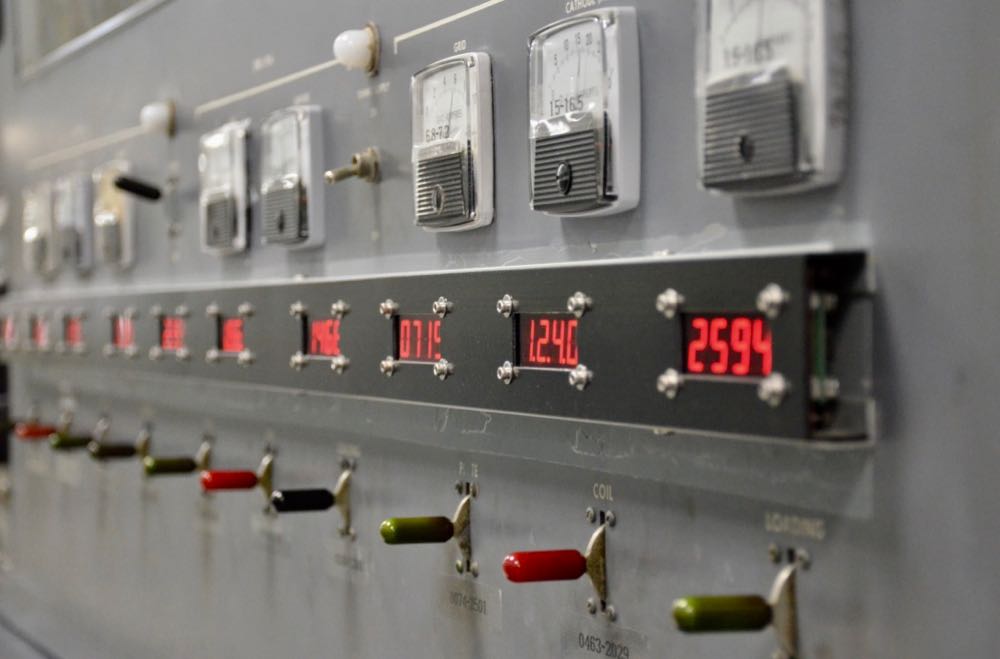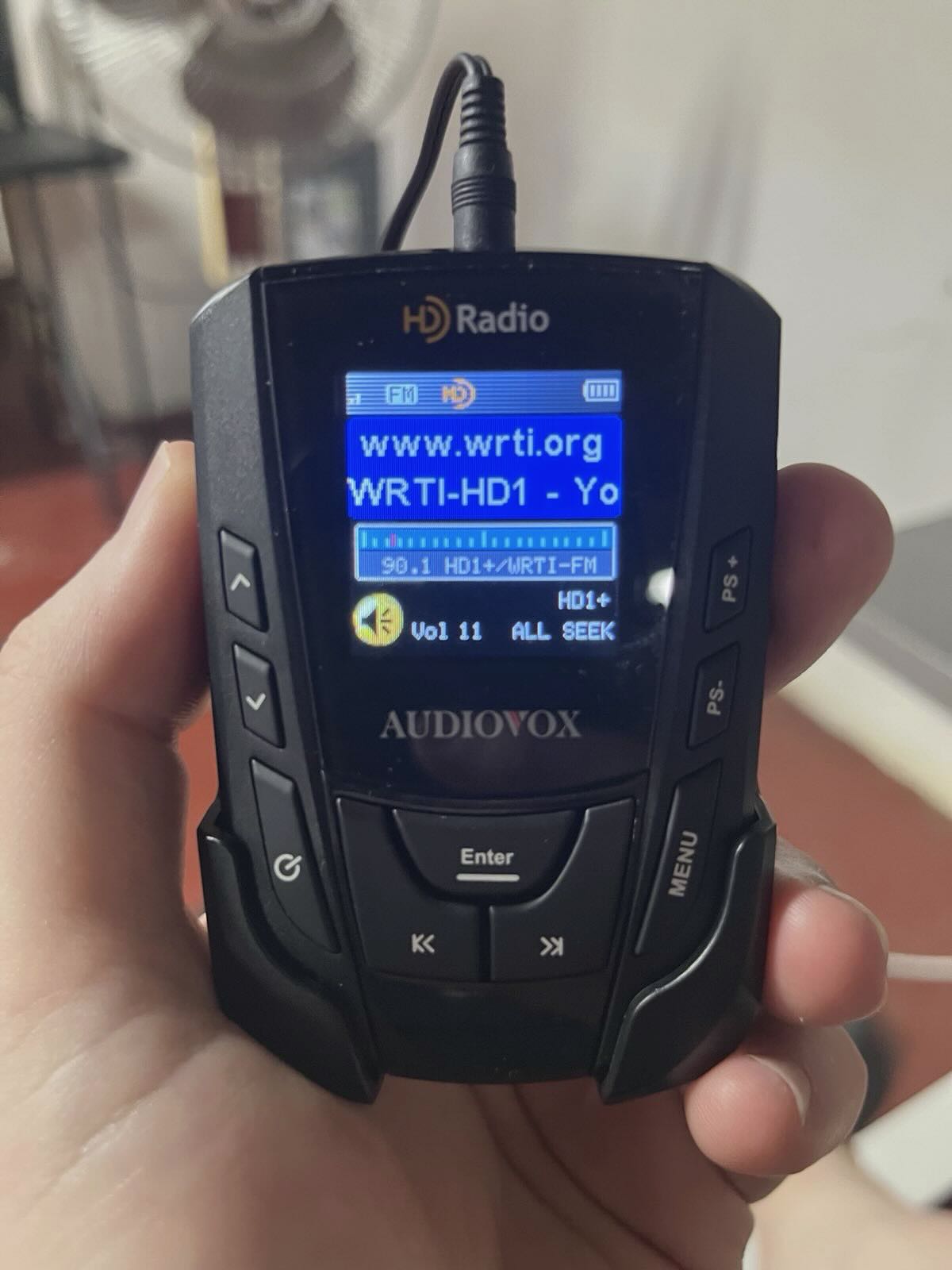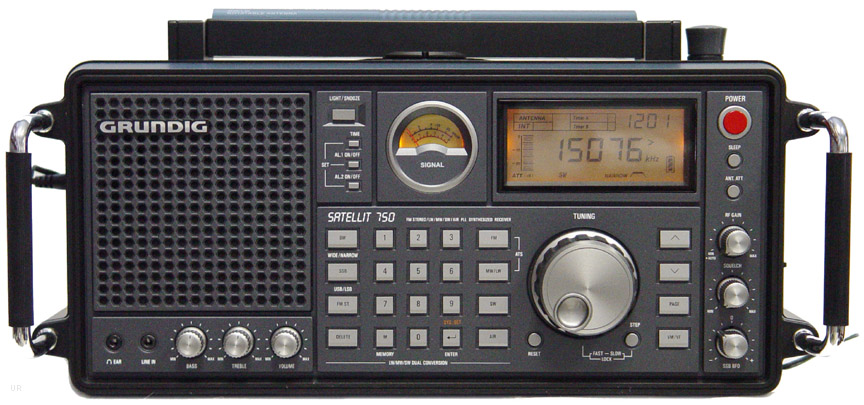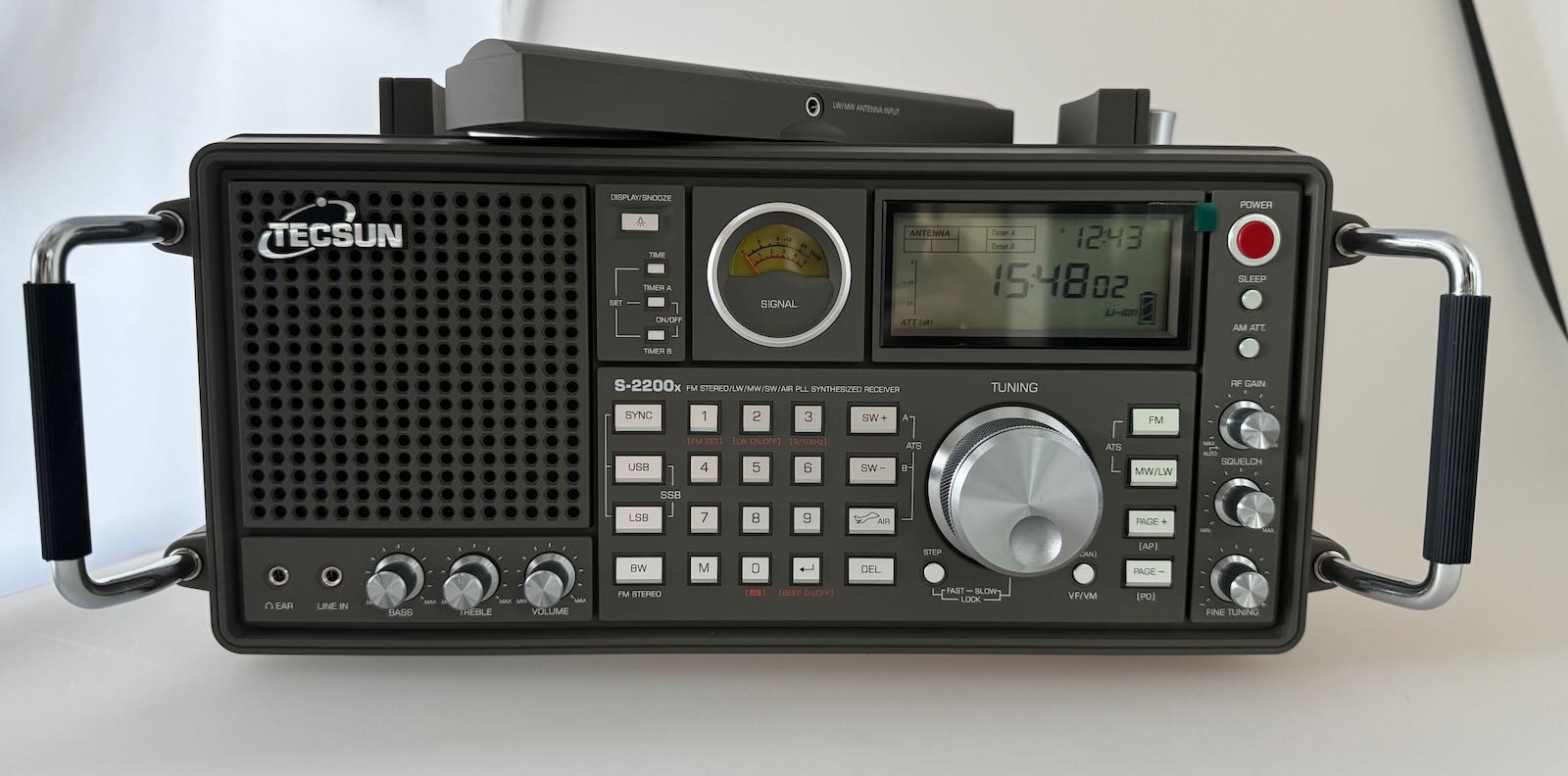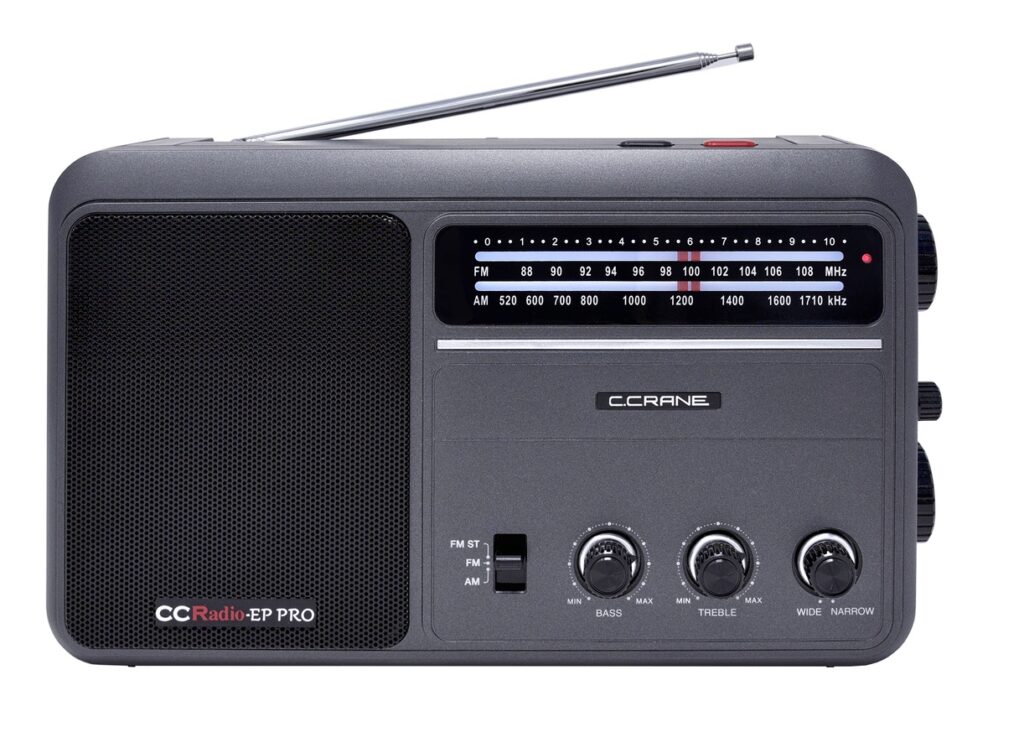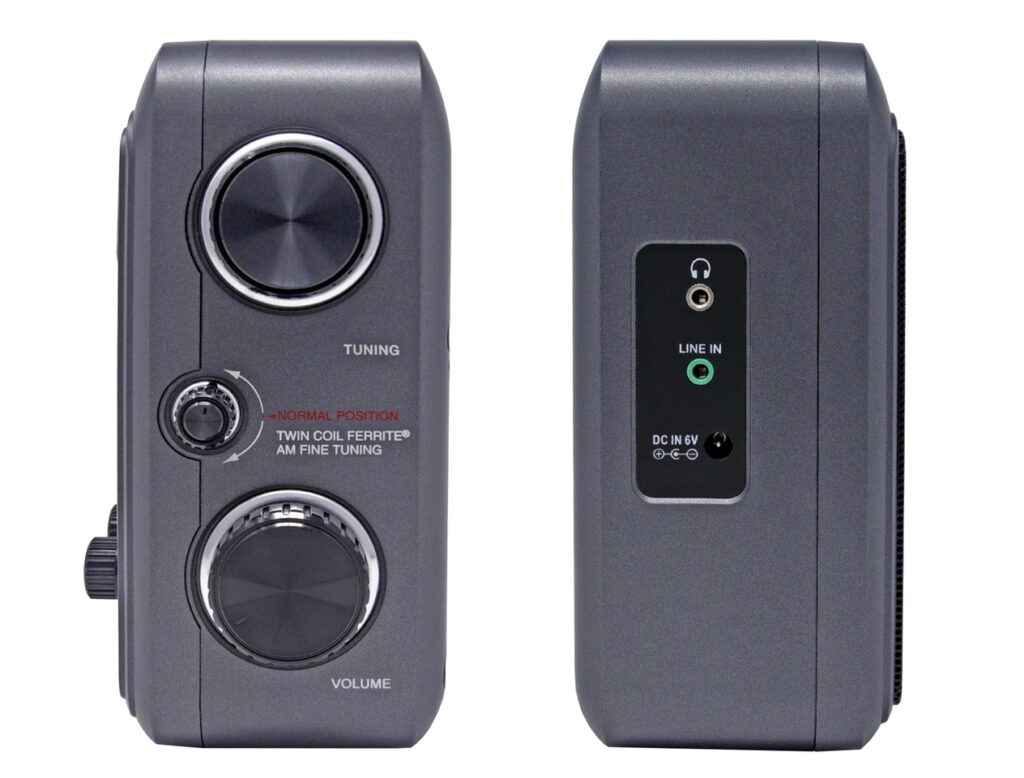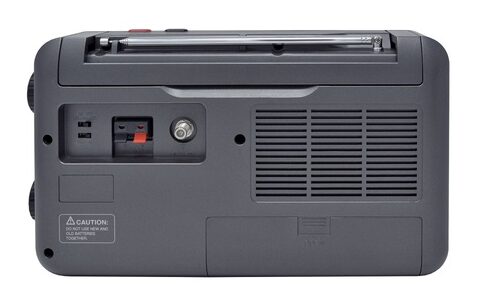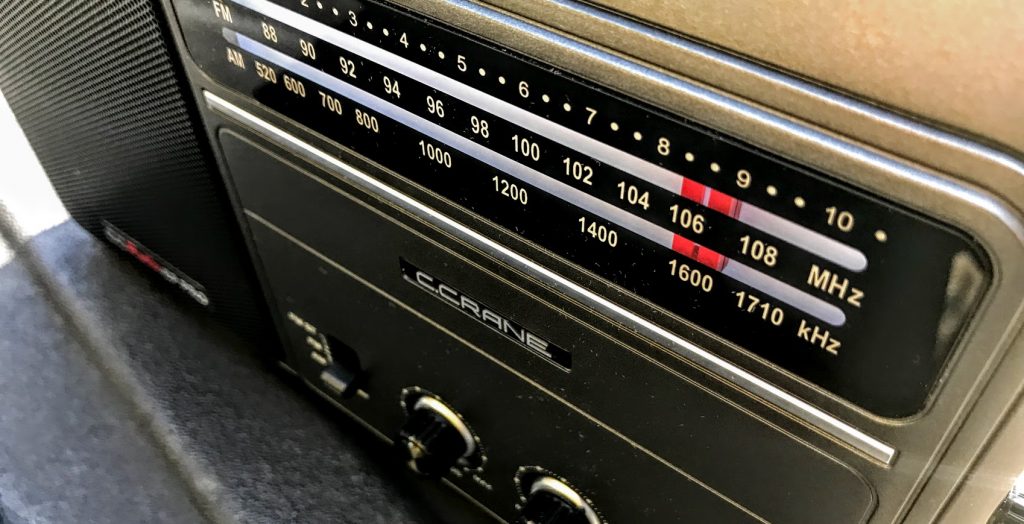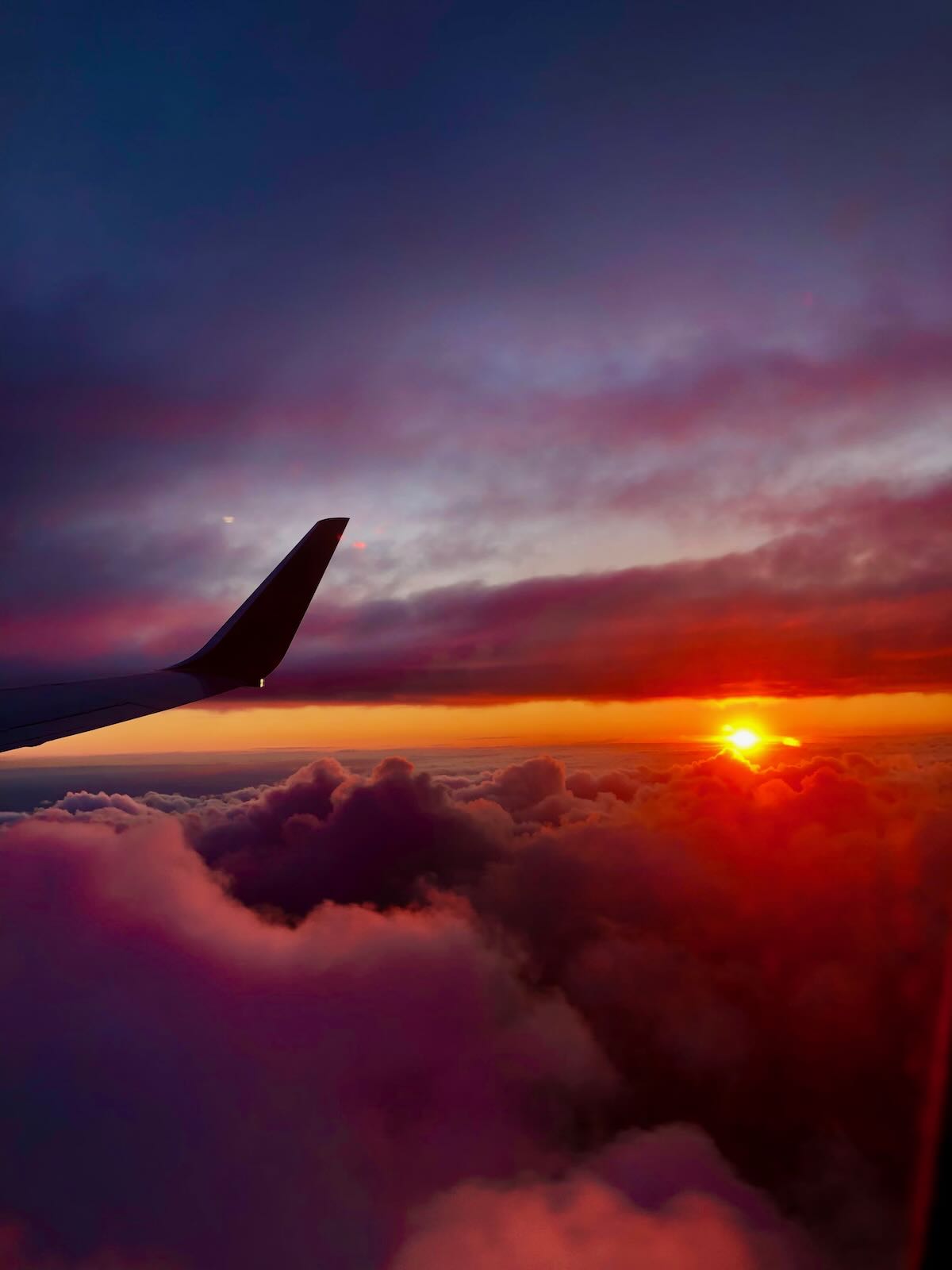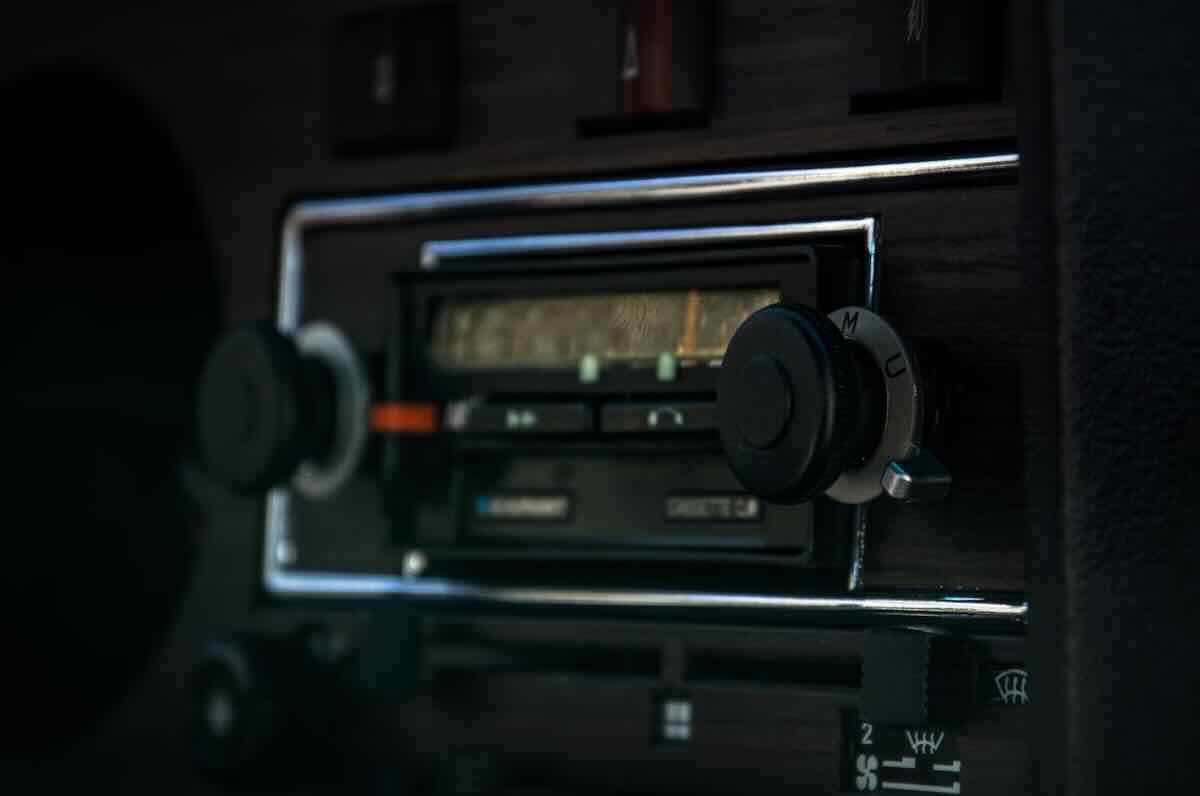 Many thanks to SWLing Post contributor Dennis Dura for sharing this fascinating Nuts & Volts article exploring the history of FM radio in American automobiles. While AM dominated dashboards for decades, FM began to make its way into U.S. cars in 1958, slowly changing how drivers listened to music and news on the road. The piece traces the industry’s hesitations, the technical challenges, and the cultural shift that followed. You can read the full story here:
Many thanks to SWLing Post contributor Dennis Dura for sharing this fascinating Nuts & Volts article exploring the history of FM radio in American automobiles. While AM dominated dashboards for decades, FM began to make its way into U.S. cars in 1958, slowly changing how drivers listened to music and news on the road. The piece traces the industry’s hesitations, the technical challenges, and the cultural shift that followed. You can read the full story here:
Tag Archives: FM
SBC pulls the plug on FM radio
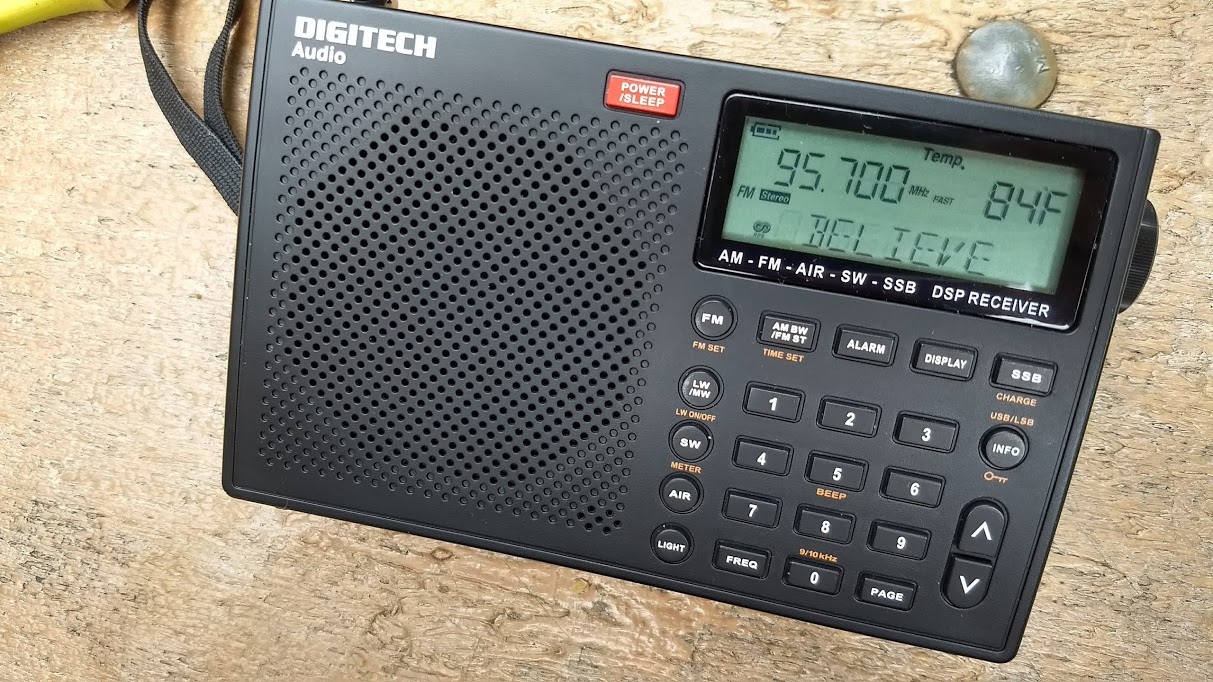 Many thanks to SWLing Post contributor, David Iurescia, who shares the following news item via SwissInfo.ch:
Many thanks to SWLing Post contributor, David Iurescia, who shares the following news item via SwissInfo.ch:
Swiss Broadcasting Corporation pulls plug on FM radio (SwissInfo.ch)
The Swiss Broadcasting Corporation (SBC) switched off outdated analogue FM transmitters at 11:59pm on New Year’s Eve.
Connections to around 850 ultra-shortwave transmitters throughout Switzerland have come to an end.
Anyone wishing to continue listening to the radio stations SRF1, SRF2 Kultur und SRF3 in the new year, for example, will have to switch to the digital radio technology DAB+ or Internet radio. All other SBC programmes were previously only available via the Internet or DAB+.
SBC, SWI swissinfo.ch’s parent company, now only needs around 260 antennas for DAB+ broadcasting.
Around two dozen private radio stations in Switzerland will continue to broadcast via FM and will not discontinue the service until the end of 2026 at the latest. [Continue reading…]
Radio Waves: VOA Announces Saipan and Tinian Closures, WCBS 880 Signing Off, Hams Stepping up in Bangladesh, and New Arctic Longwave Station
Radio Waves: Stories Making Waves in the World of Radio
Welcome to the SWLing Post’s Radio Waves, a collection of links to interesting stories making waves in the world of radio. Enjoy!
Many thanks to SWLing Post contributors Paul, Dennis Dura, Richard Cuff, and Bake Timmons for the following tips:
Voice of America station in CNMI announces closure (Saipan Tribune)
The U.S. Agency for Global Media has announced that it will be closing its Robert E. Kamosa Transmitting Station in the CNMI after decades in operation.
The station broadcasts the Voice of America transmission to Asia.
In a letter form USAGM’s William S. Martin, director of operations and stations division, a big change is taking place at the U.S. Agency for Global Media’s Robert E. Kamosa Transmitting Station.
“The change is a discontinuation of all shortwave radio transmissions at our Saipan and Tinian sites, the first step in closing the station,” he said.
According to Martin, on June 26, the USAGM—an independent federal agency that oversees the Voice of America, Radio Free Asia, and other U.S. funded international civilian broadcasters—announced it was closing REKTS, its two shortwave radio transmission sites, on Saipan and Tinian.
[…]”While shortwave radio was an effective and popular way for people in media-deprived countries to access international news and information during WWII and the Cold War, Martin says shortwave use has fallen dramatically almost everywhere since the invention of the internet and the fall of Soviet Union in the 1990s. [Continue reading…]
WCBS 880 signing off after nearly 60 years, ESPN New York to take its place (lohud)
WCBS 880 AM, one of New York’s leading news radio channels for nearly 60 years, will be replaced with ESPN New York on Aug. 26, as 1010 WINS becomes the main radio station for real-time news coverage in the New York metro area.
Audacy, the parent company for both WCBS 880 and 1010 WINS, announced the agreement with Good Karma Brands, a sports media network, on Aug. 12. The station 880 AM will become the new home of ESPN New York and will use the call letters WHSQ-AM, pending FCC approval.[Continue reading…]
Hams Stepping up in Bangladesh (BBC Newsroom)
Many thanks to SWLing Post contributor, Bake Timmons, who writes:
Hams are stepping up right now in a very busy place — Dhaka, Bangladesh.
I heard ham radio mentioned this morning on this morning’s broadcast of the BBC program “The Newsroom”. A volunteer traffic coordinator and ham described (18:55 in the podcast linked below) how every traffic hub is now connected w/ amateur radio in the city of Dhaka, Bangladesh, in response to the absence of police, who have withdrawn from their normal duties after the ousting of prime minister Sheikh Hasina.
The story begins about 17:21 into the podcast at
https://www.bbc.co.uk/sounds/play/w172zbqdkb748vg
The First New Long Wave Radio Station Of This Millennium (Hackaday)
The decline of AM broadcast radio is a slow but inexorable process over much of the world, but for regions outside America there’s another parallel story happening a few hundred kilohertz further down the spectrum. The long wave band sits around the 200kHz mark and has traditionally carried national-level programming due to its increased range. Like AM it’s in decline due to competition from FM, digital, and online services, and one by one the stations that once crowded this band are going quiet. In the middle of all this it’s a surprise then to find a new long wave station in the works in the 2020s, bucking all contemporary broadcasting trends. Arctic 252 is based in Finland with programming intended to be heard across the Arctic region and aims to start testing in September. [Continue reading…]
Click here to check out Arctic 252’s website.
Do you enjoy the SWLing Post?
Please consider supporting us via Patreon or our Coffee Fund!
Your support makes articles like this one possible. Thank you!
Aaron Explores: Why a Dedicated Radio Enhances the Live Baseball Experience
Many thanks to SWLing Post contributor, Aaron Kuhn, who shares the following guest post:
Live Baseball on the Radio: Radio Selection Considerations

The authors own Sangean Portable + AirPod Pros + a Bluetooth Transmitter rubber banded to the radio back, Coca Cola Park – Allentown, PA
In recent years, I’ve enjoyed attending minor league baseball games in my region. One of my favorite aspects of live baseball is bringing a radio to listen to play-by-play commentary. Experiencing the game in person while hearing the commentary in my ear offers the best of both worlds.
Over the years, I’ve brought various portable and ultra-portable radios to games, and I’ve realized that certain criteria make for a good “Live Baseball Radio.” Whether it’s form factor, size, or features, a live sporting event presents specific considerations and trade-offs for the radio you choose to bring.
“I’ll just stream the game on my phone”
While there are many options for internet streaming on a smartphone, like the free game audio feeds from MiLB.com, streaming game audio on a smartphone is not ideal for live baseball due to one major issue: latency.
Ideally, you want the action you see to match as closely as possible with the play-by-play you hear. With internet streaming, you’re subject to internet latency and buffering, leading to audio delays that you cannot fix. This makes streaming better for listening to games from afar, but not for live baseball.
Selecting the Ideal Radio
Picking a radio to bring to a game involves considerations that become obvious only after you’ve tried it a few times. Hopefully you can learn from my past mistakes and be more informed.
AM, FM, or AM/FM?
There are no fixed rules about the frequency’s baseball teams use for broadcasting. Some teams are on AM radio, some on FM, and some simulcast on both. Some teams don’t broadcast on free-to-air radio at all, opting for streaming-only solutions. Choosing a radio that receives both AM and FM is your best bet to ensure you can use it at different stadiums.
Many ultra-portable “pocket” radios support only FM, which might leave you without audio if your local team is on AM. Conversely, vintage pocket transistor radios might leave you stuck with AM-only signal receiving capability, missing the FM signal.

Vintage RCA Transistor Radio, Photo by Joe Haupt – https://www.flickr.com/photos/51764518@N02/49435844673/
HD Radio
While HD Radio seems like a great idea for live baseball, the HD signal suffers from similar issues as streaming a game: latency
I recently picked up an ultra-portable FM HD Radio for a great deal secondhand, only to take it to the ballpark and realize the HD Signal was delayed by nearly 20 seconds. Worse yet – the radio offered no way to turn off the HD signal and revert to analog! The radio was unusable for watching the game as play-by-play in my ear was nearly four pitches behind what I was seeing live.
If you choose a radio with HD Radio features for the ballpark, check the broadcast delay on the HD signal before the game, and ensure you can turn off the HD Radio features if necessary.
Radio Size and Antenna Considerations
Any radio can be portable if you try hard enough, but space is often limited at live sporting events. Stadium seating varies at some ballparks, you can spread out a blanket on a hillside, sit at a picnic table, or even watch the game from a pool (better check that IPX rating!). However, you’ll likely be using your radio while seated in your ticketed seat. Some stadiums offer spacious, modern seating, while older stadiums may have small, cramped seating.
Antennas on radios are another consideration. In cramped stadium seating, you may not have the luxury to fully extend the antenna for the best signal without poking the person in front of you or next to you. You might want to consider a radio without an external antenna, such as one like the Retekess V112, which uses the headphone cable as the antenna. You may also need to stand up and sit down repeatedly to let people through the aisle rows to their own seats, which is where going “antenna-less” can be useful.
While a headphone-wire antenna setup may be a perceived undesirable feature for dedicated radio hobbyists, pocketability and ease of use in a crowd can be beneficial at a crowded game. Many stadiums are moving towards bag restrictions or not allowing bags at all, making the proposition of transporting even a modest-sized portable radio to a game a chore. A pocket-sized radio you can stick on a lanyard, wear into the park, or stick in a pocket may be the difference between being annoyed all game carrying around a radio, or just enjoying it.
On the flip side, if you plan on pairing your radio with a Bluetooth transmitter to use Bluetooth earbuds or headphones, you may want to select a radio with an antenna. The short cable run on many Bluetooth transmitters may not provide adequate reception for units that use connected headphones as the antenna.
Speaker or No Speaker
If you’re not using the radio for tailgating, consider whether you need a speaker on the radio. Many pocket radios omit a speaker to reduce weight and cost. If you need to unplug your headphones during the game, it might be better to avoid a speaker that could blast game audio accidentally and disrupt your neighbors. Ditching the speaker is also likely to save weight and battery life.
Cost Considerations and Final Thoughts
Choosing the right radio for live baseball involves considering factors like frequency options, latency issues, size, portability, and whether you need a speaker.
Everyone’s finances and purchasing abilities differ, but there are many adequate radio options available for under $20 USD that check a lot of these boxes, making it possible to have a dedicated radio for live sports without spending a lot of money. As radio hobbyists, we sometimes want the best for our listening experiences, but taking an expensive radio to a live sporting event can be risky due to cramped quarters, constant movement, and the potential for spills or accidents.
In my opinion, it’s better to enjoy the game with a “lesser radio” than to spend the entire game worry about damaging an expensive radio. After all, cleaning mustard out of your expensive radio’s speaker grill is not fun post-game entertainment. Focus on enjoying the day and the live sporting experience while enhancing it with the wonder of live ballpark radio – no matter what you bring along.
Dan Robinson Reviews the New Tecsun S-2200X Portable Receiver
Many thanks to SWLing Post contributor and supporter, Dan Robinson, who shares the following review:
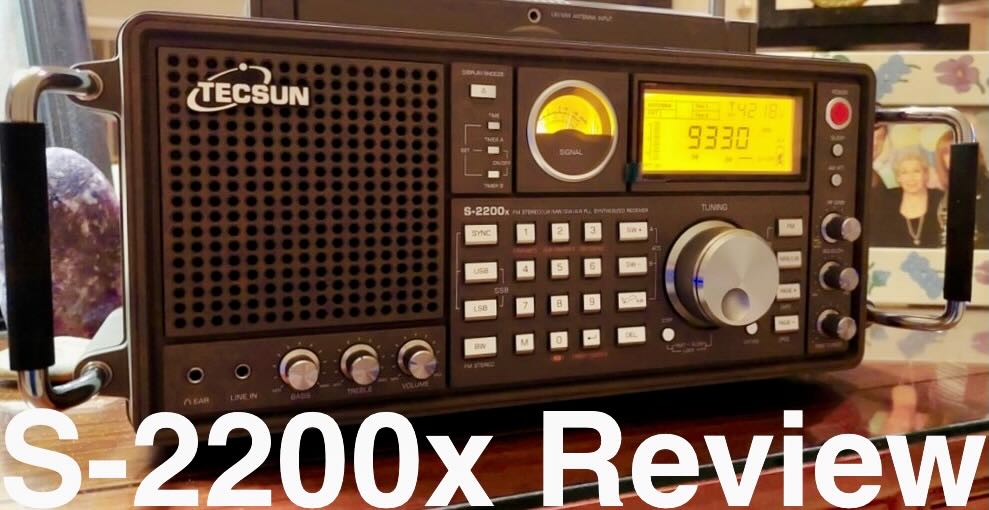 Tecsun Delivers The S-2200X – New Life For A 16-Year-Old Cabinet Design
Tecsun Delivers The S-2200X – New Life For A 16-Year-Old Cabinet Design
by Dan Robinson
Note: Please see an addendum of updates at the end of this post.
Some months ago, I learned from Anon-co that Tecsun planned to release an update to the S-2000 receiver, which for the past 16 years also sold under other names such as the Grundig Satellit 750 and later the Eton Satellit 750 and Eton Elite 750.
To say that this radio was long in the tooth is an understatement.
I remember seeing one when they first came out back in 2008 and I was never very impressed. To me, the radio looked like a toy, and the performance did not impress. The standout feature was the top-mounted rotatable antenna for MW/LW reception. That was popular with those of us who own the Panasonic RF-2200 and it’s a great tool for MW.
While popular with a certain segment of the listening hobby – beginners liked the 750 and even some veteran SWLs appreciated the retro design — the receiver was plagued by annoying issues, such as the famous wobbly tuning knob. It also had limited selectivity, no synchronous mode, and mediocre SSB.
In 2013, The Monitoring Times (Larry Van Horn) took another look at the radio with the following memorable comments:
[MONITORING TIMES 2013]
“Needless to say some folks were not happy with our review of the 750 including Etón. In retrospect, over four years later, I would not change one single word I wrote in that review. I believe we honestly gave a fair assessment of the unit that was shipped to us for review. If you read my previous review closely, you would see that most of my concerns back then had to do with quality control issues and most in our industry fully acknowledge that we were seeing some nasty stuff coming out of China back in 2008.”
So, measuring from 2008 when the first Eton 750 came out we’re now in 2024 and Tecsun has decided to preserve the cabinet design of the original radio while substantially upgrading the internals.
Enter the S-2200x
Reviewers have obtained units from the first production run. Tecsun has provided long-needed upgrades that put this radio on the same playing field as the very popular H-501 and PL-990 portables.
The 2200x adds a dedicated SYNC mode with its own front panel button. AIR band is retained, though sadly coverage doesn’t extend up to give us the NOAA WEATHER frequencies.
My initial testing of the S-2200x shows that performance is excellent on SW, AM, and FM. In contrast with portables from other manufacturers, SSB performance is excellent – in USB and LSB, tuning is smooth with no “warbling” and using the fine tuning control is a pleasure. Continue reading
Sometimes simple works . . . really well! Exploring the CCrane EP PRO
By Jock Elliott, KB2GOM
This particular adventure began about three weeks ago with an email from CCrane. “Timeless, Easy to Use with Long Range Radio Reception” the headline read. Further, the accompanying text promised: Comes with needle and dial tuning, one button for power, one button for a bright display light, and has no clock or alarm. The radio in question was the C.Crane CCRadio-EP PRO.
The “Long Range Radio Reception” initially caught my eye, but the simplicity of an old-fashioned “needle and dial” – what I call “slide rule” – tuning” also appealed to me, so I emailed CCrane, asked them if they would like to send me one for review, which they did, without charge.
While waiting for the EP PRO to arrive, I examined the photos of the EP PRO on the CCrane website, and I noticed something peculiar: a switch on back for choosing between 9 kHz tuning steps and 10 kHz tuning steps. Whaaat?! Why in the world would you need such a thing on a radio with needle and dial tuning?
We’ll get to the answer to that question shortly, but first let’s take a tour of the CCrane EP PRO.
The case is a rectangle with rounded corners that measures 11.4″ W x 7.3″ H (8.4″ H with handle) x 2.75″ D and weighs 4.5 pounds without batteries. Starting on the left front panel, you’ll find a 5-inch speaker. To the right of that, there is the slide rule (needle and dial) tuning setup, with a small red light on the right side that illuminates when a station is found. Below that is a CCrane logo and further below is a switch for selecting AM (520 – 1710 kHz, 10 kHz steps; 522 – 1620 kHz, 9 kHz steps), FM (87.5 – 108 MHz), or FM stereo; a knob for adjusting bass, a knob for adjusting treble, and a knob for choosing between narrow (2.5 kHz) and wide (6 kHz) filter bandwidths.
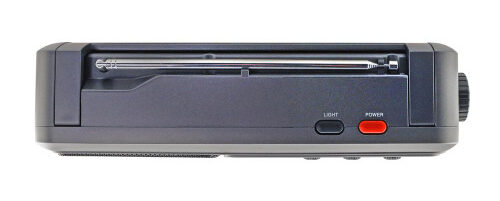 On top of the EP PRO are a red POWER button, a black button for lighting the tuning dial, a flip-up carry handle, and a 36-inch telescoping antenna for FM reception. (Inside the case is a ferrite bar antenna – 12mm x 200mm (7.9″) long with CCrane’s Twin Coil Ferrite® technology.)
On top of the EP PRO are a red POWER button, a black button for lighting the tuning dial, a flip-up carry handle, and a 36-inch telescoping antenna for FM reception. (Inside the case is a ferrite bar antenna – 12mm x 200mm (7.9″) long with CCrane’s Twin Coil Ferrite® technology.)
On the right side of the case at top is the tuning knob, below that a knob for fine-tuning the internal antenna for AM reception, and at the bottom a knob for volume. On the left side of the case, you’ll find a 1/8” stereo headphone jack, a line-in jack, and a socket for plugging in an external 6-volt AC adaptor which is provided with the EP PRO.
On the back of the radio is a hatch for installing four D-cell batteries (CCrane says it will run for about 175 hours at moderate volume with the dial light off), external antenna connections: spring loaded for AM and “F” connector for FM, a switch for selecting internal or external AM antenna, and the switch for selecting 9 or 10 kHz tuning steps.
That’s it. The EP PRO is almost Zen-like in its simplicity. There are no seek buttons, no automatic storage functions, no memories, no key pad. And there is a darn good reason for that. It turns out that the immediate predecessor of the EP PRO, the CCrane EP, was created by Bob Crane because his mother wanted a very simple radio that was easy to operate. The CCrane EP, a true needle and dial analog radio, was the result.
Bob believed that, besides his mother, there was a market for such a radio, and there was. Unfortunately, after a time, the analog chips necessary to build the CCrane EP became unavailable. As a result, the radio was redesigned internally using modern digital chips (essentially the same as those in CCrane’s model 2E and 3 radios) while keeping it simple and easy to operate. So inside what looks like an old-fashioned analog radio beats the heart of a high-performance digital radio that combines the high sensitivity needed to hear distant stations with excellent selectivity to block signals from the side.
In my view, the EP PRO is great fun to operate. In the predawn hours on a weekend morning with the rain falling softly outside, I started tuning slowly across the AM dial with the EP PRO in my lap. Near the bottom end, a couple of sports mavens were chatting about a pitcher who had a couple of rough two initial outings and then had “settled in.”
A bit further up the dial Dionne Warwick was telling me to “walk on by.” Then I ran into a music station competing with a talk show considering “the Bible, angels, and UFOs.”
Up the dial some more, apparently a good deal on a high performance car could be had at a dealership in Connecticut; then an air quality report for New York City, a female voice delivering a long discourse in French and so on up the dial.
I was impressed at the number of stations that the EP PRO was pulling in, and it brought me back to the simple joy of tuning around to see what’s on the air.
Each time a discernible station appeared, the red tuning LED would light up. As needed, I used the antenna tuning knob and the bandwidth selection switch to tweak the signal. The needle and dial tuning gives an approximate indication of where on the band the radio is tuned, so if you want a positive ID, you need to listen for a station ID or some other clue to the station’s location.
At one point I jumped to the FM dial and found I could easily pick up many FM stations even with the whip antenna collapsed. In all, I am of the opinion that both the AM and FM sides of the receiver are pretty “hot,” and at no time did I find myself wishing for an auxiliary antenna for more signal. Further, the sound through headphones or the speaker is very pleasant indeed. In my mind, the relatively unadorned exterior of the EP PRO belies its outstanding performance. To stretch an analogy, it’s a nitro-burning funny car in the body of a Honda Civic, and you don’t have to be a genius to drive it.
If you’re looking for a high-performance radio that is easy to use and sounds good through speaker or headphones, the CCRadio EP PRO delivers the goods. For a content DXer like me, the EP PRO encourages me to tune around and discover the magic of radio all over again.
CCRadio-EP Pro Retailers:
- C.Crane
- Amazon.com (SWLing Post affiliate link)
Carlos’ FM DX in a Flight Over Europe and North Africa
Many thanks to SWLing Post contributor, Carlos Latuff, who shares the following FM radio recordings made while flying over northwest Africa. Carlos writes:
Flying over Northwest Africa towards Paris yesterday I managed to listen and record FM stations from countries like Senegal, Mauritania, Morocco and Spain, at an altitude of 10668 meters, using the native FM radio of my cell phone. Interesting thing is that it was only possible when I got close to the plane emergency exit. Back to my seat I wasn’t able to listen.
94.3 FM, Senegal, May 11, 2023:
95.0 FM, SNRT Amz Morocco, May 11, 2023:
101.7 FM, Spain, May 11, 2023:
91.0 FM, Mauritania, May 11, 2023:
Thank you for sharing this, Carlos. Impressive reception from your cell phone’s FM receiver!
Without fail, I always try to listen to FM stations as I fly. This also reminds me of a post from our archives when Ivan used a small SDR to DX while on a flight.
Thank you again and happy travels!

